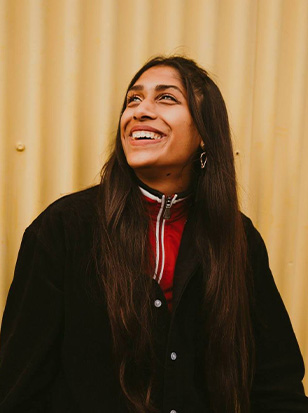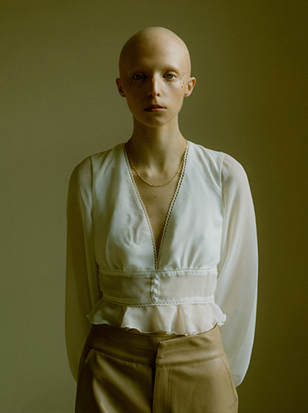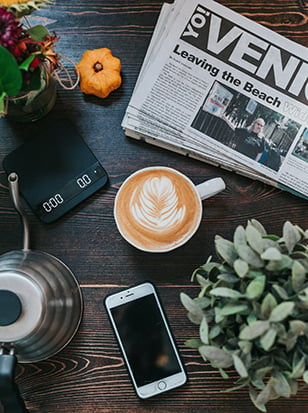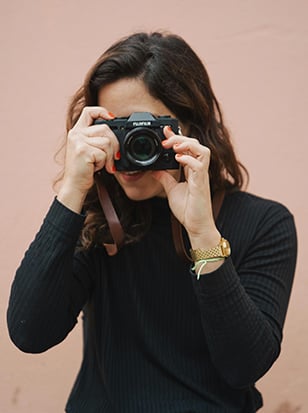
Isha Shah
- Job title: Music Photographer
- Education: Music Journalism at the University of Southhampton
- Website: ishashahphotography.com
- Instagram: ishashahphotography
- Related jobs: Events photographer, filmmaker, editor, photojournalist
Isha Shah is a South Asian photographer specialising in live music. She is an expert in her field and has captured incredible images of well-known musicians such as Lewis Capaldi, Mr Eazi, Miguel and Enter Shikari. From her humble beginnings, posting her photos online for her friends to see, she has mastered her art and has publications across the globe.
I am very grateful to have had the chance to have a chat with Isha about her photographic journey and how she built her brand. She’s had an exciting career thus far and she has a lot of invaluable advice so if you are an aspiring music photographer, this is one for you.
Leo White: How did you first become interested in photography?
Isha Shah: I’ve always taken photos. I would use my point-and-shoot digital camera to take photos of my school friends, make videos and document the gigs I went to for fun. The photos were generally terrible and out-of-focus, but that didn’t stop me from sharing them on Facebook; I was that girl with hundreds of photo albums of the most random things. It was an organic process from photographing for the love of it to turning a hobby into a job.
LW: So, how did you get to where you are today?
IS: It wasn’t until my third year of university that I realised that my music photography could become a career.
At first, I photographed gigs because it’s how I enjoyed the music. I used the university’s magazine to apply for gig press passes and later started my own called New Roots. Despite us being a small student magazine, we got into some pretty large shows such as Slam Dunk! festival. I would post images from these gigs daily on Instagram and Twitter to show my availability and that I am someone current.
At this stage in my career, people still listed all their contact details on Facebook and I took the opportunity to contact as many artists and their managers as possible. Generally, no one answered. But I am glad I did because several artists or their managers have replied years later for jobs.
I learned that persistence is paramount. Once I realised this could be a career, I made a more conscious effort to think about my clientele, marketing myself and day rates. While it’s more difficult to get contacts as easily today, with the amount of free education available on social media, the level of creativity among photographers will ultimately flourish and get recognised for it.
View this post on Instagram
LW: What was your first role in the industry?
IS: When I was in Southhampton, there was a big House music scene and my friends and I wanted to get involved. We decided to organise, plan and manage some events, and this was the first real step into the industry. As mentioned, I also ran my magazine. I designed it, produced social media assets, took photos and videos and was on the radio as well. I was doing a little bit of everything. None of this was paid though, and that’s usually how you start out. You work, gain more experience, build a portfolio and soon learn the value of time and how to charge for it.
My first paid gig was shooting duo Rae Sremmurd at O2 Shepherd's Bush Empire, London, and that came about the same way, photographing artists and posting the photos on Twitter. In this case, I’d been working this way for a while when Jack Garrat and their record label reached out and asked me to freelance for them. I was one of their first UK freelance photographers and at the time I was over the moon to just be there, documenting their artists.
LW: So, how did you get hired at first how has it changed now?
IS: At first, I was hired for my pure passion and love of music. And while I don't think that has changed, how I have been hired throughout my career has changed. When started working with the big guns and the labels, I worked for several major clients and it felt a bit impersonal when I turned up and met the band and artist as I didn’t know them and they didn’t know my style etc.
Now, the jobs I am hired for are much more from the network I've built up and the people I have met along the way who are specifically wanting my style. In fact, the day I filmed with Wex at an Enter Shikari gig, I met Danny from McFly. He loved my work and wanted to hire me. Five months later, he stuck to his word and hired me. In that way, it feels like I’ve come back to more like how I started; being hired for me and when walking into a room, people are excited to have my style of work delivered.
I attribute this process to the reputation I’ve built from the early days of grafting, but it would also be unfair to say that I got this on my own. Being in the right place and at the right time helps too. Trust me, I am a massive McFly fan so keeping my composure was hard.
View this post on Instagram
LW: Could you describe how you charge for your service?
IS: I usually charge a day rate but it differs whether it’s an independent band, a major label or a small company. The rate should also change whether photographing a live show for a band or a publisher (where you’re often only given the first three songs to get the shots), tours, BTS or music videos. If it’s just a gig, I charge less because I am not there all day.
Usage is how you make the most of your money as a music photographer. Your rate shouldn't include usage. Your day rate includes turning up, taking photos, your equipment, and having the software and time to edit photos.
Similarly to a day rate, usage rates vary depending on how the client wants to use the images e.g., whether it’s just for social media or a magazine cover. If the client requires extended use or exclusive rights, I will have a unique agreement with them.
LW: When did you know this was a career for you?
IS: A poignant moment for me was in 2019 when I received an email asking to be filmed for an interview. The email didn’t exactly explain what it would be and despite better judgement, I thought it would be good to do some press. When I arrived, the director explained what the piece would be about and it turned out to be a Sky Arts docuseries about photography with some of the most influential photographers and iconic bands.
It felt like a turning point in my career where I was then taken seriously as a photographer by my family and the industry. It gave me confidence in my abilities and validated my judgement and unique approach via Instagram - school doesn’t teach you how to build a career using Instagram.
LW: Could you give us three top tips or advice for those aspiring to a similar career:
- Keep up to date with up-and-coming artists on TikTok, Twitter and Instagram. But while doing so, explore the music and artists you believe in rather than those who you think will trend. Be authentic in your approach.
- Make yourself known by contacting artists, promoters, venues and publications - be present in your area. You should want to build real relationships and connections with people; not simply see people as someone to be used.
- “Shoot your shot but don’t be a beg”. It’s all about timing. Be sure to read the room and approach people when the time is right. There may be people you want to work with or jobs want that may not manifest until years later but be patient and don’t hound people for work.
View this post on Instagram
About the Author
Leo White has been part of the Wex Photo Video team since 2018, taking on roles from the contact centre to the product setup team. Holding both a BA and an MA in photography, Leo brings a wealth of expertise he’s always ready to share.
The Wex Blog
Sign up for our newsletter today!
- Subscribe for exclusive discounts and special offers
- Receive our monthly content roundups
- Get the latest news and know-how from our experts







